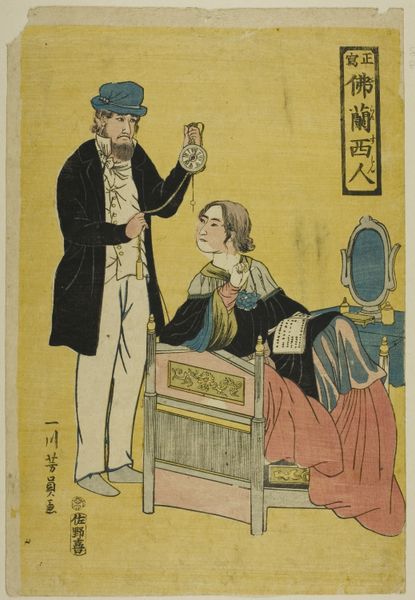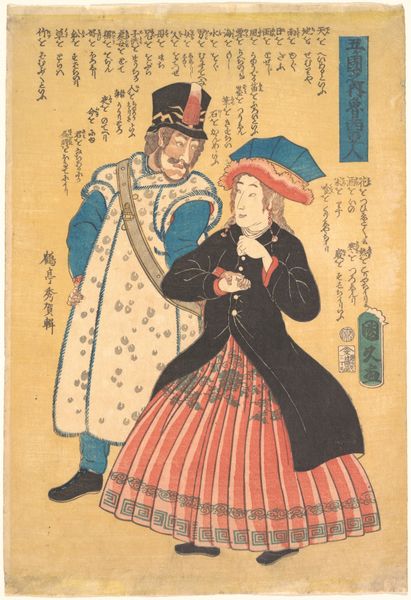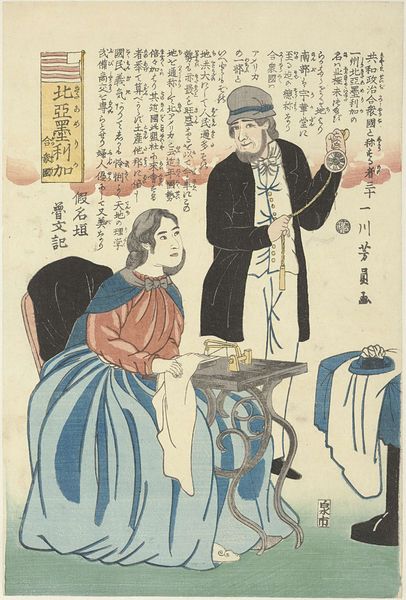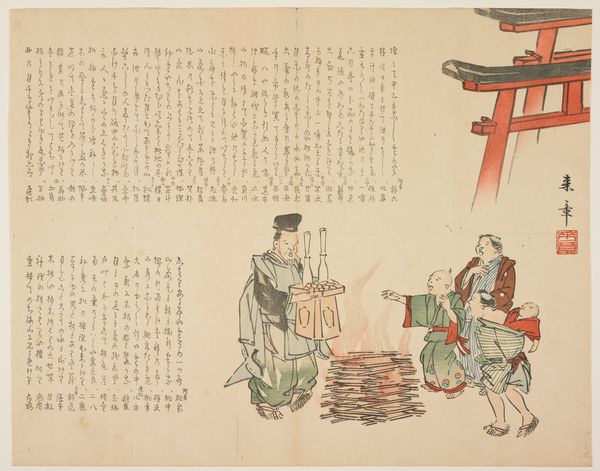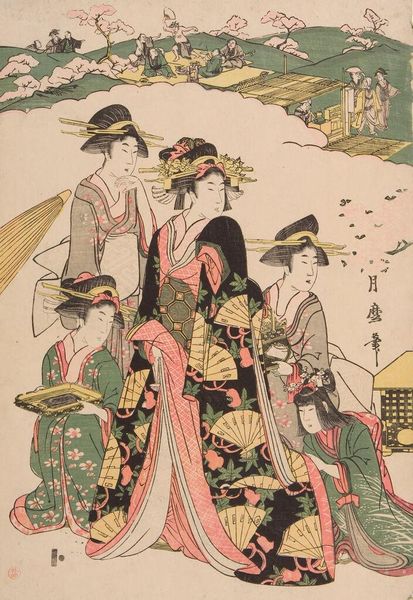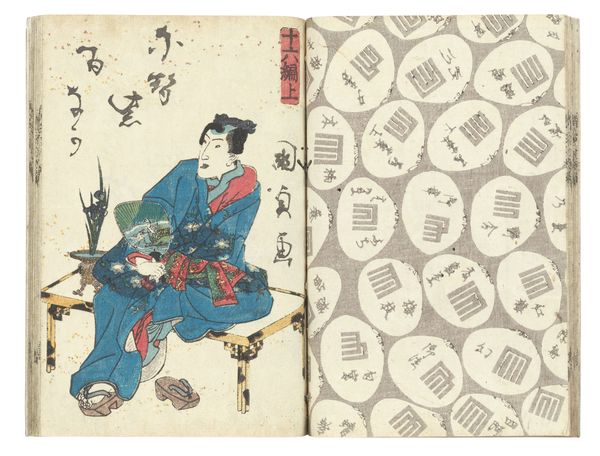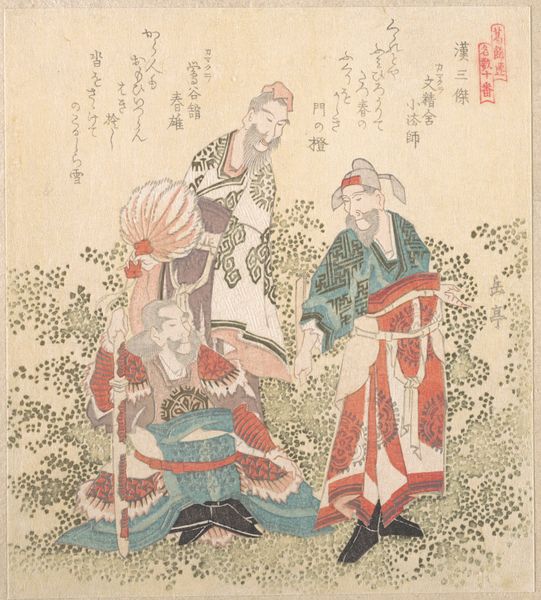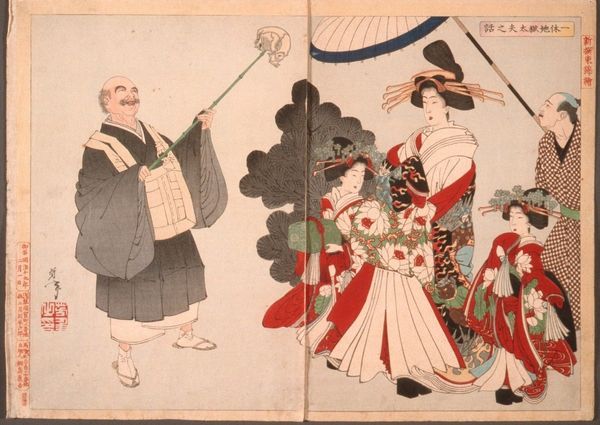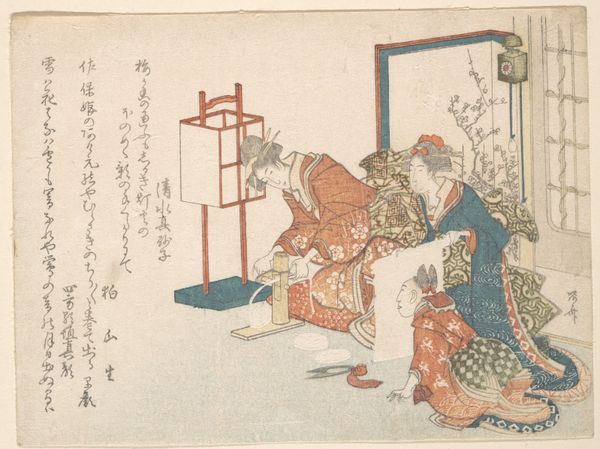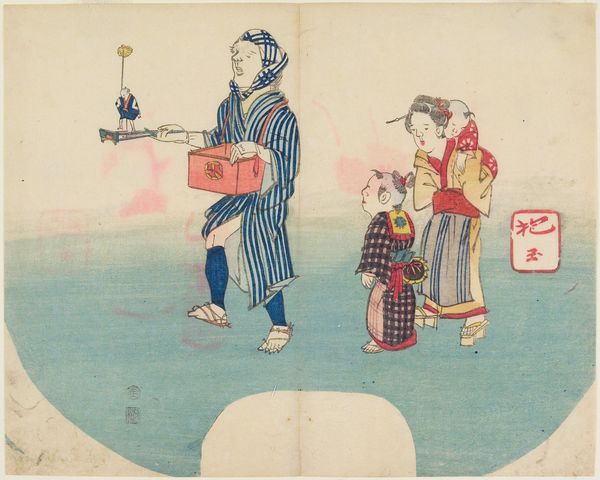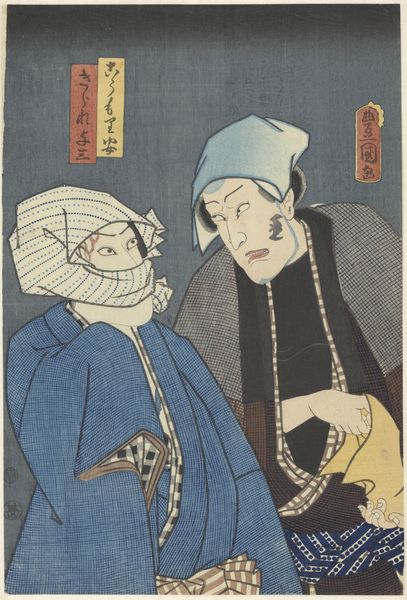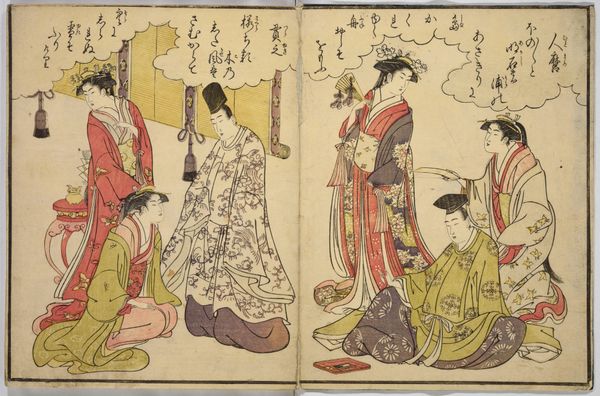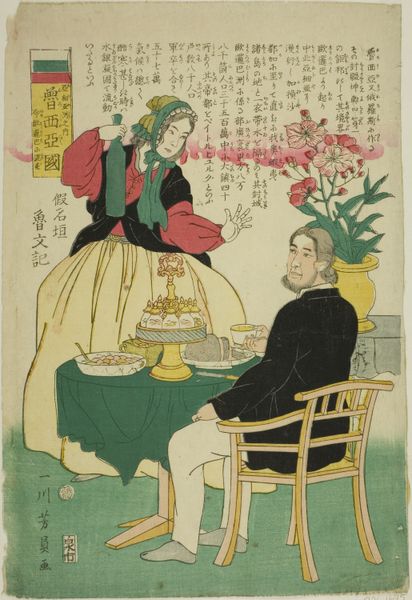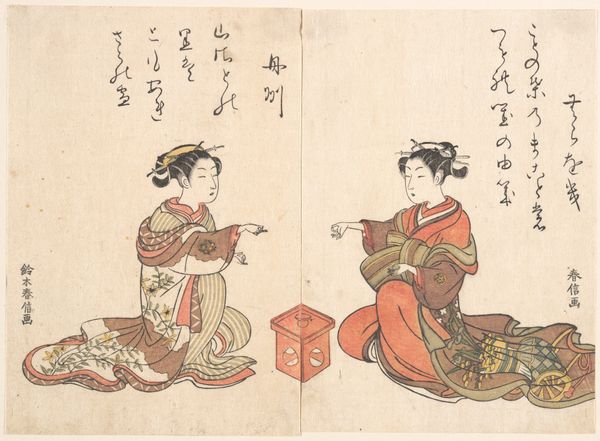
drawing, print, paper, ink, woodcut
#
portrait
#
drawing
# print
#
asian-art
#
ukiyo-e
#
paper
#
ink
#
woodcut
#
genre-painting
Dimensions: 7 1/8 x 9 3/4 in. (18.1 x 24.7 cm) (image, sheet)
Copyright: Public Domain
Editor: Here we have "Dutch (right)", a 19th-century woodblock print by Utagawa Yoshiiku, housed in the Minneapolis Institute of Art. I'm immediately struck by the juxtaposition of the two figures, each presented almost as a study in contrasts. How do you interpret the composition? Curator: The immediate element to examine is the structuring principle behind the visual language employed. Observe how the picture plane is essentially divided, each side presenting a figure in a distinctly separate, self-contained space. Consider how line dictates the folds of fabric, and the planes of the face. Are you noticing any deliberate patterns within those lines? Editor: I see it, especially in the woman’s skirt, the parallel lines forming these rigid panels, which contrast so strongly with the curves in her ruffled sleeves and the man's very geometric table and chair. Curator: Precisely. Furthermore, reflect on the role of colour. Note the limited palette, a careful orchestration of muted tones – pinks, blues, whites – bound by black outlines. What effect does this deliberate restraint evoke, and how does the placement of colour inform the balance? Editor: It almost feels like the colors highlight their "foreignness," defining them through subtle but deliberate aesthetic choices rather than an accurate representation of their appearance. Curator: An astute observation. Reflect on how these compositional elements converge to shape meaning. How the artist uses color and line, the deliberate sectioning of space. To what extent can we say that formal decisions create specific impressions? Editor: This analysis really highlights how the artist’s choices impact the piece’s impact. Thanks! Curator: Indeed, it underscores the profound way in which the formal language becomes content, even within apparently simple representations.
Comments
No comments
Be the first to comment and join the conversation on the ultimate creative platform.
